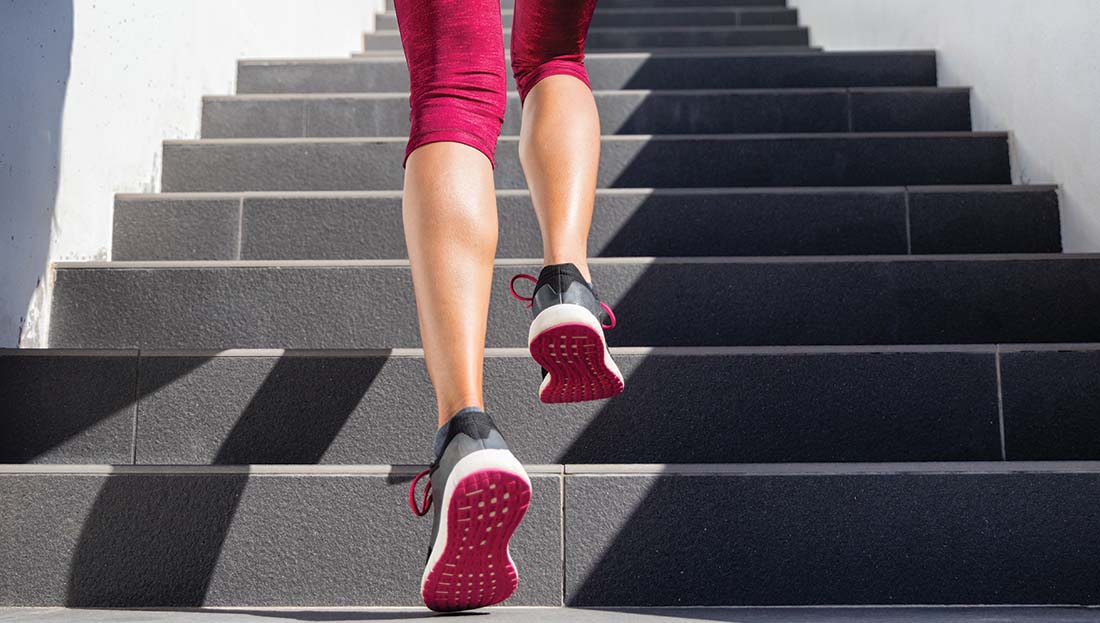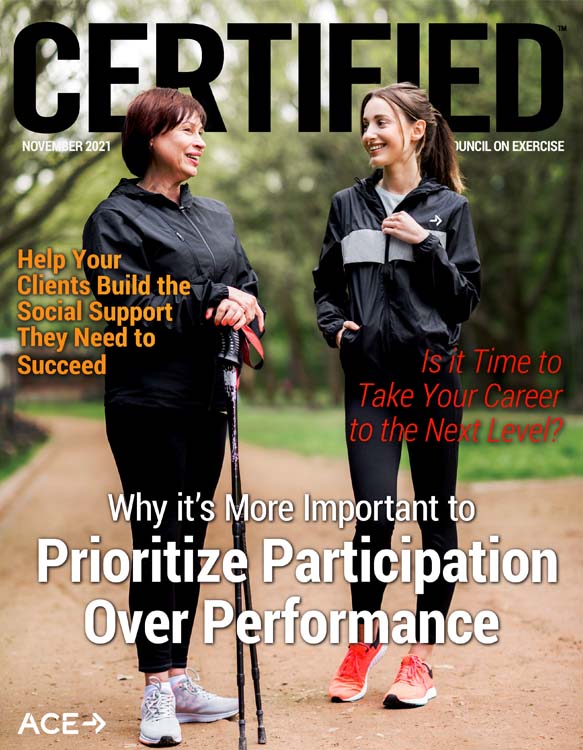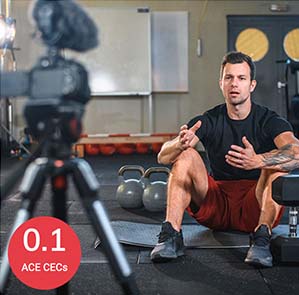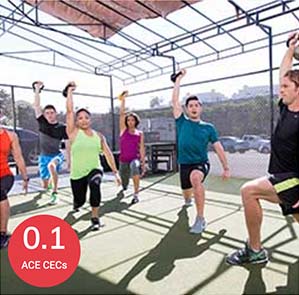
Do you want to take your career to the next level?
Of course, you do!
It’s up to you define what that next level might entail: more money, more influence, more clients, more followers or simply more time to choose to do what you’d like to do. Regardless, the first step starts between your ears.
With an attitude adjustment.
“The fitness pro needs to shift from a freelance mindset to a business owner mindset,” says Julian Barnes, co-founder and CEO of Boutique Fitness Solutions.
Barnes quotes the best-selling business author, blogger and podcaster Seth Godin to explain the difference. Godin, Barnes says, defines the freelancer as “someone who is only looking for another client, and only gets paid when he or she provides a service.”
That, he adds, would describe most health and exercise professionals. “Let’s say you’re a personal trainer charging a hundred bucks an hour,” he says. “That’s great, but you only make that money when you’re delivering your service for an hour. So, when you go on vacation, you’re not making any money.”
This is often described as “trading time for dollars,” and it’s a widely used concept among service businesses.
“There’s nothing wrong with that,” says Barnes. “Except that it’s not scalable. There are only so many hours in a day, only so many hours you can train your client, which means that, if you’re only trading time for dollars, your revenue has a ceiling.”
By contrast, entrepreneurs are people who build organizations that deliver products or services with the potential to generate passive revenue—meaning, as people like to say, that you can make money while you’re sleeping.
“Now you can take a vacation and you’re still earning income,” Barnes says. “Now you can afford to be sick for a couple of days.”
Making Money While You Sleep
Once you understand the distinction between freelancing and building a business, you need to start thinking about how to generate recurring, multiple revenue streams.
“This is something we learned during COVID,” he says.
Case in point: Kari Saitowitz, owner of the Fhitting Room, a boutique studio with three locations in Manhattan, specializing in high-intensity interval training (HIIT) classes.
When New York City locked down in March 2020, she wasn't thinking about how to develop multiple revenue streams. The decision she faced was more urgent and fundamental. “How do I keep my business alive?” she recalls thinking.
The key was delivering what her customers really wanted—which, she realized, was not just a challenging workout, but the socialization and camaraderie of a group workout. But how could she maintain that sense of community when her studio spaces were closed?
The answer was by going “omni-channel.”
For Ms. Saitowitz, it meant ramping up the creation of an on-demand video library of workouts, switching live classes to Zoom and striking a partnership with a local retailer to use a rooftop event space on a building near her flagship studio location, where she could hold socially distanced outdoor classes.
Each channel also became a revenue stream—one that she hopes will continue to flow well beyond the pandemic.
“To stay alive,” says Saitowitz, reflecting back on the first year of the pandemic, “you had to be nimble, you had to innovate, and you had to do things differently.”
You Are a Businessperson
If you want to take your career to the next level, even as we emerge from the current situation, it could be argued that you need to do the same.
“We have to think of ourselves as businesspeople,” says Shannon Fable, a business development coach who specializes in the fitness industry.
For the average health and exercise professional, that business is often rooted in your expertise—not only about fitness and exercise in general, but about fitness and exercise for specific audiences.
Do you lack such expertise? Then, acquire it! Because being able to target a market for your services is an important step up the ladder.
And just who might those audiences be?
“It could be elite athletes in high school trying to get college scholarships,” says Barnes. “It could be competitive marathoners or tennis players, prenatal or postnatal or post-menopausal women. Whatever it is, you need to identify it and become an expert in all aspects of healthy living that can serve your core audience.”
Finding that audience, many agree, is key to success. “Right now, a lot of the people in our group are working to tailor programs to meet the needs of more niche demographics,” explains Larry Indiviglia, who leads one of Todd Durkin’s Mastermind business-development groups for health and exercise professionals. “Senior training is big. Youth training is big.”
He cites examples of Masterminds who have flourished with target-market strategies, such as Terry Martin, owner of Martin Fitness Systems in Napa, Calif., who has developed strength and conditioning services for hiking—with a particular emphasis on fall-avoidance for seniors on the trails. At Fitness Quest 10 in San Diego, the gym founded by Durkin, trainers Jeff and Teddy Bristol have developed a strength and conditioning program for high school wrestlers. And then there’s the example of Big Wheel Coaching, based in Yucaipa, Calif., and owned by Joy and Brian McCulloch, who specialize in online coaching for cyclists of all levels, and according to Indiviglia, have increased their client base a whopping 46% during the pandemic.
Mastering the Sales Cycle
Identifying your target audience is the first step toward what Fable calls a Sales Cycle—which she defines as a hierarchy of products and services that can help deliver your benefits to clients, but not just in terms of one-on-one training.
The Sales Cycle is also one in which, step by step, you provide more and more value to the client, as you build a relationship.
And you start by luring them in, through one of the most basic incentives in sales:
“You need a freebie,” Fable says. “And that’s more than just a free training session. If they don't know you from Adam, a free session is too far to take it on a first date. I’ve got to schedule a time in my busy day to meet you, I’ve got to show up, devote an hour. It’s a lot of risk.”
The free introductory service or product you offer has to be something more easily accessible: A short video the client can follow, for example, or a written workout plan or tutorial.
The next step in the cycle might be to invite the prospective client to a small group workout—online or in-person.
“We’re trying to get them to tiptoe toward us,” she explains.
The final stage is when we start trading that time for those dollars. And we do that, she believes, not by following the standard one-on-one session model, but by offering (as Saitowitz did in the Fhitting Room) multiple channels: “Maybe there is a group-training option, or an online training option,” she says. “Maybe I deliver a written program, and we meet for face-to-face instruction once a month.”
It comes back to the idea of diversification. “Remember, you’re a business,” she says. “A business is usually more than one product or one item.”
Barnes agrees. “When thinking about recurring revenue, I think in terms of options that package the fitness pro’s knowledge in different forms, and then selling access to that knowledge to different audiences,” he says. “That could be on-demand fitness classes; that could be custom program design. What do the clients want to know and what are the clients willing to pay for?”
Those are questions that couldn’t be answered when Robert Morea, co-owner of Great Jones Fitness in Manhattan, started as an exercise professional. Indeed, when Morea graduated from the University of Delaware in 1989 with a degree in exercise science, personal training “wasn't even really a business yet,” he says.
He went to work in a corporate fitness facility in midtown Manhattan, monitoring the blood pressure of middle-aged corporate executives as they plodded along on treadmills or rode stationary bikes. The emphasis was entirely on cardio; there was no weight-training equipment. “But people wanted that, too,” he says. “So, I started working with these people on strength training in their homes, and then transitioned to a commercial gym.” At World Gym, his one-on-one business began to grow—to the point that he and another trainer were able to partner up and open their own studio.
Not long after he opened the studio, one of his clients encouraged Morea to get a real estate license. “I thought, ‘Why not?’ I’d been training for 20 years—why not stretch my mind in a different way?” Morea found that his experience as a health and exercise professional actually prepared him well for a career in the high-flying world of Manhattan real estate. “I’m used to dealing with people one on one,” he explains. “A lot of my clients in the gym had trusted me with their health. My clients in real estate trusted me with their money. They sort of intertwined nicely. I still do both.”
Morea hastens to add that he’s not recommending that health and exercise professionals today need to get their real estate license. But he certainly encourages expanding into new channels and new directions—whatever those might be.
“What’s great about fitness is that there are so many avenues you can take, especially today,” he says. “First, you have to master your craft, of course. But then, develop those relationships with your clients and your colleagues, and let the opportunities present themselves.”





 by
by 





